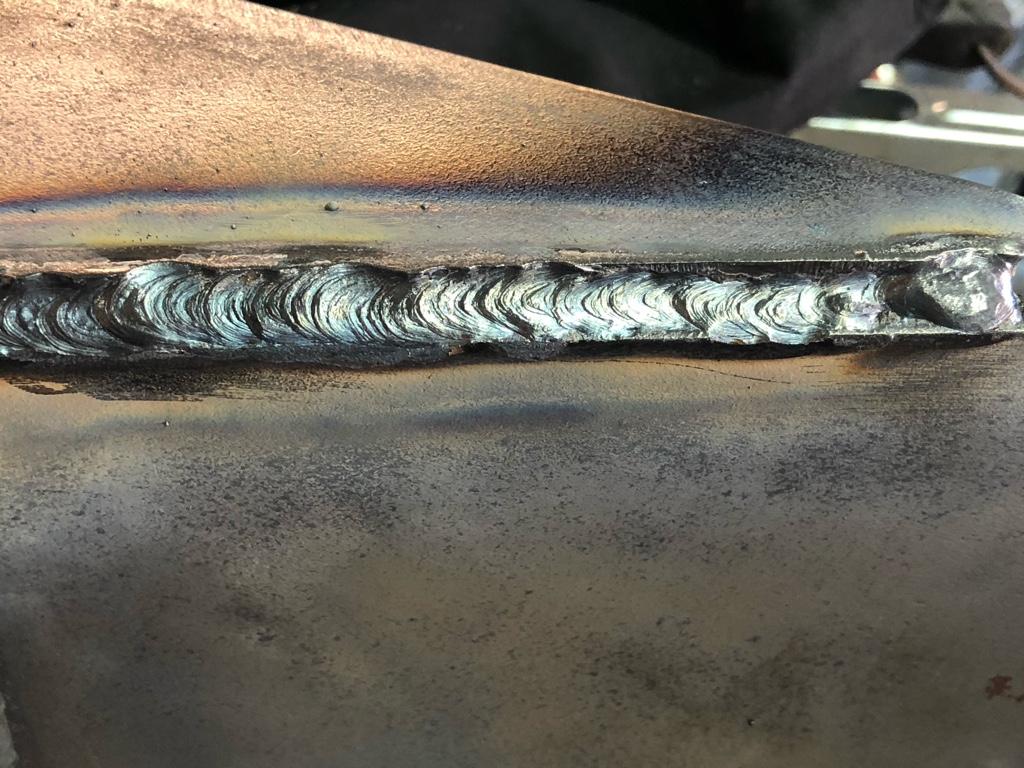Reliable Ways to Prevent Weld Undercut in Your Welding Tasks
Reliable Ways to Prevent Weld Undercut in Your Welding Tasks
Blog Article
Understanding the Causes and Solutions for Undercut Welding in Steel Manufacture Procedures
In the world of steel construction processes, the incident of undercut welding positions a considerable challenge that demands a comprehensive understanding of its causes and sensible remedies. The detailed interaction of different aspects during welding operations can lead to this unwanted sensation, affecting the structural integrity and total high quality of the welded joints - Preventing weld undercut. By dissecting the source of undercut welding and checking out effective therapeutic procedures, producers can elevate the criterion of their handiwork and guarantee the production of remarkable metal parts
Usual Root Causes Of Undercut Welding
Often ignored in steel manufacture, undercut welding takes place due to numerous factors that demand precise interest and know-how to be properly minimized. In addition, improper welding techniques, such as using the incorrect welding angle or take a trip rate, can additionally add to damage development. The option of welding specifications, such as voltage, present, and cable feed speed, plays a significant role in the occurrence of undercut welding.
Impact of Incorrect Welding Parameters
Inaccurate welding criteria can significantly endanger the honesty and top quality of bonded joints in metal fabrication processes. The influence of wrong welding specifications materializes in various ways, bring about architectural weaknesses and problems in the bonded parts. One important element impacted by improper welding criteria is the infiltration depth of the weld. Not enough warmth input because of low welding currents or exceedingly high travel rates can lead to insufficient fusion in between the base metals, leading to insufficient joint penetration and damaged bonds. On the other hand, excessive warmth input triggered by high welding currents or slow traveling speeds can bring about excessive and burn-through reinforcement, producing a breakable and unsteady weld framework. In addition, inaccurate parameters such as inappropriate voltage settings or incorrect electrode angles can add to erratic weld grain profiles, absence of fusion, and boosted chances of flaws like undercutting. Meticulous interest to welding criteria is paramount to make sure the manufacturing of top quality welds with the preferred mechanical properties and structural stability.
Impact of Improper Torch Angle
Incorrect torch angle in welding operations can considerably impact the quality and honesty of the final weld joints in metal fabrication processes. The lantern angle plays an essential role in identifying the heat input and distribution throughout welding. When the lantern angle is wrong, problems such as undercutting can occur. Undercutting is a common welding issue where a groove creates along the weld toe, damaging the joint and endangering its structural integrity.
A torch angle that is too steep can bring about not enough infiltration, incomplete fusion, and raised spatter. On the various other hand, a torch angle that is too superficial can lead to excessive infiltration, burn-through, and distortion of the base material. Preventing weld undercut. Proper lantern angle is vital for ensuring regular weld high quality, strength, and look
To stop undercutting and various other problems triggered by incorrect torch angles, welders need to be trained to keep the appropriate lantern angle throughout the welding process. Normal tracking and change of torch angles throughout welding can help attain sound welds with marginal problems.
Duty of Inadequate Welding Techniques

One more element of inadequate welding techniques is inappropriate weld prep work. Insufficient cleaning of the base metals, incorrect joint layout, or not enough side preparation can all add to undercut welding. Moreover, poor protecting gas protection or using the incorrect sort of gas can lead to incomplete blend and the development of undercut problems.
To deal with the role of poor welding methods in steel manufacture processes, it is important to provide thorough training for welders. Appropriate education on welding specifications, joint preparation, and securing gas choice can aid stop undercut welding and ensure high-grade welds in metal manufacture jobs.
Effective Solutions for Undercut Welding
Attending to undercut welding in metal fabrication needs applying efficient remedies to enhance weld top quality and structural stability. Among the main remedies to fight undercut is to readjust welding parameters such as voltage, present, and take a trip speed to make sure proper warm input and blend. By fine-tuning these settings, welders can stop too much melting of the base metal and filler material, lowering the possibility of undercut development.
In addition, proper joint preparation is critical in avoiding undercut. Making sure tidy base metal surfaces devoid of impurities and using the suitable bevel angle can assist advertise far better weld penetration and decrease the danger of undercut - Preventing weld undercut. Utilizing ideal my response welding strategies, such as oscillating the torch or weaving, can likewise help in dispersing warmth equally and filling the weld joint sufficiently, decreasing the opportunity of undercut issues
Furthermore, selecting the appropriate welding consumables, including electrodes and filler metals, is vital in alleviating undercut. Making use of products with proper chemical make-ups and mechanical residential or commercial properties can add to achieving sound welds with minimal undercut. Regular inspection and quality control measures should also be implemented to detect and go to these guys address undercut concerns without delay, making certain the total stability of produced metal components.

Verdict
Finally, comprehending the causes and solutions for undercut welding in steel manufacture procedures is important for achieving high-quality welds. By addressing usual reasons such as incorrect welding parameters, inappropriate torch angle, and inadequate welding strategies, welders can stop undercutting and ensure solid, resilient welds. It is necessary to pay attention to these variables and execute effective remedies to enhance the general welding procedure and end product top quality.

Report this page